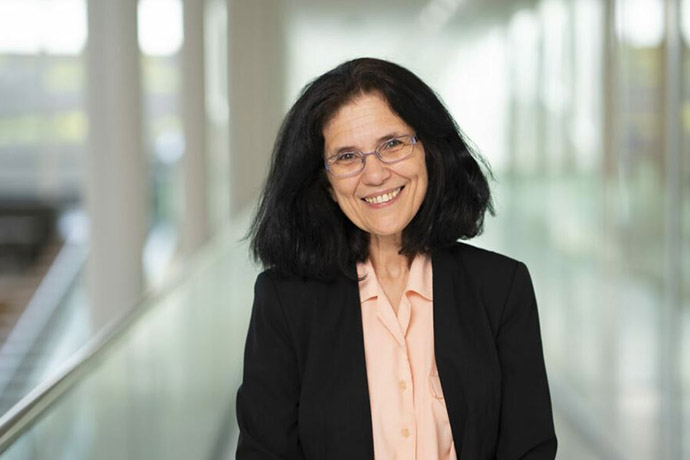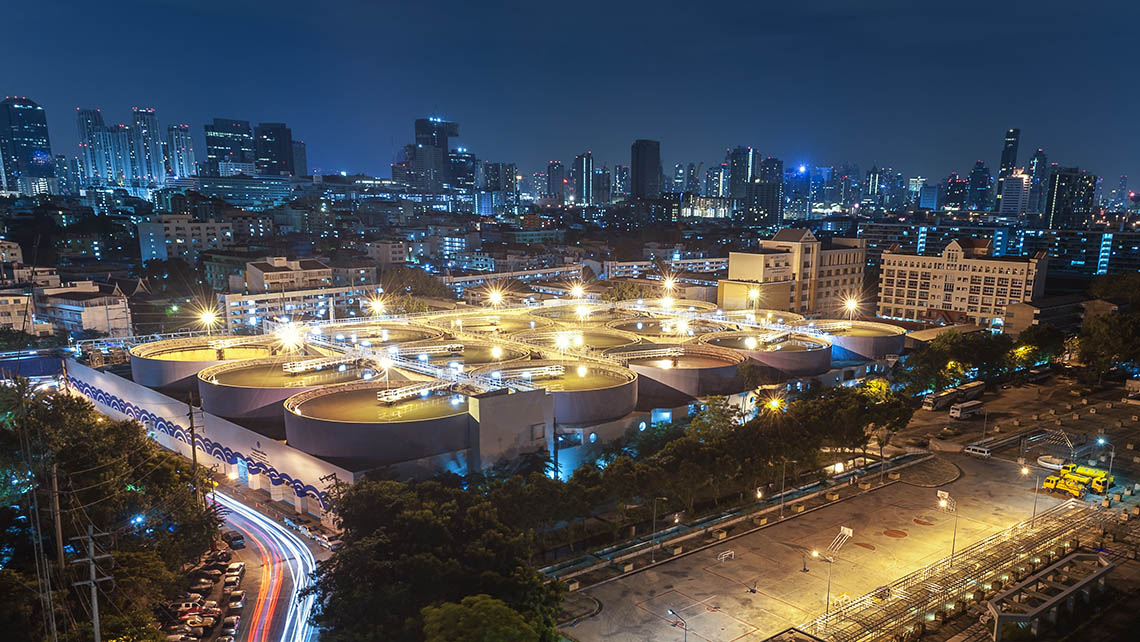Based in the Netherlands, Lydia Vamvakeridou-Lyroudia is a senior researcher and director of the Watershare® program at KWR Water Research Institute. She is also part of Water Europe, a member-based innovation platform, where she participates in the working group on digital water. We caught up with Lydia to learn more about her work with wastewater utilities and how they are managing energy and climate targets with new solutions.
For starters, she reminded us of the basics. “To treat and supply water, you need energy. But also, treatment of wastewater produces energy. It’s a cycle,” she says.
Today, WWTPs have several ways to reduce energy use, maximize energy production and improve circularity. That includes, for example, turning sludge into biogas. Still, Lydia says, there’s potential to do even better thanks to digitalization. In her day-to-day work, she focuses on bringing together the physical and digital worlds. Or, as she calls it, creating the cyber-physical system.
Exploring the cyber-physical
Through KWR and international projects, Lydia has experience on how cloud-based computing, intelligent algorithms and artificial intelligence (AI) complement existing wastewater treatment technologies, such as membranes, filters, chemistry and biological treatment.
Her advice? Combine solutions whenever possible. She encourages WWTPs to connect more physical equipment with cloud-based solutions and software, so they have more robust plant-wide controls and predictive analytics.
Lydia offers “soft sensors” as an example. Soft sensors are digital only. Calibrated to a system’s physical sensors, they use predictive monitoring to give WWTP operators a clearer view across more of the system. “It’s like having a sensor in a place where you don’t have one,” Lydia explains. This enables automated dosing, real-time feedback, and helps operators anticipate dynamic situations.
According to Lydia, big national utilities and larger private water companies are early digital adopters, and they’re reaping the benefits. “Well managed systems are reducing energy use by 20-40%,” she said. Meanwhile, many thousands of smaller WWTPs are lagging due to resources, political wrangling or plain old reluctance. “There are some municipal wastewater treatment facilities that opt for physical sensors alone because they don’t want their data in the cloud or they consider soft sensors and AI ‘too advanced’,” she explains.

Lydia Vamvakeridou-Lyroudia is a senior researcher and director of the Watershare® program at KWR Water Research Institute.
Digital services for energy savings
At Kemira, we are helping wastewater utilities tap into new technology to improve energy efficiency and sustainability. Our KemConnectTM advanced water treatment combines world-class chemistry with a digital platform for easy automated dosing, energy optimization and compliance with tightening regulations.
Much like Lydia, our goal is to help more wastewater treatment facilities get ready for the low-carbon future by optimizing their processes now. For example, our recent collaboration with the Finnish city of Joensuu helped the local WWTP increase biogas output by 17%.
We also saw great results in Copenhagen. BIOFOS, the wastewater treatment provider, reduced the energy consumption of their sludge treatment process by almost 4.4 GWh with a carefully selected sludge dewatering polymer and KemConnect™ SD for advanced sludge dewatering. Other benefits included energy savings from reduced suspended solids in the centrate, as well as drier sludge, which resulted in lower sludge hauling and disposal costs.
Based on our experience with customers, the findings are along the same lines with Lydia: WWTPs should unite their cyber and physical systems to improve their energy balance.
